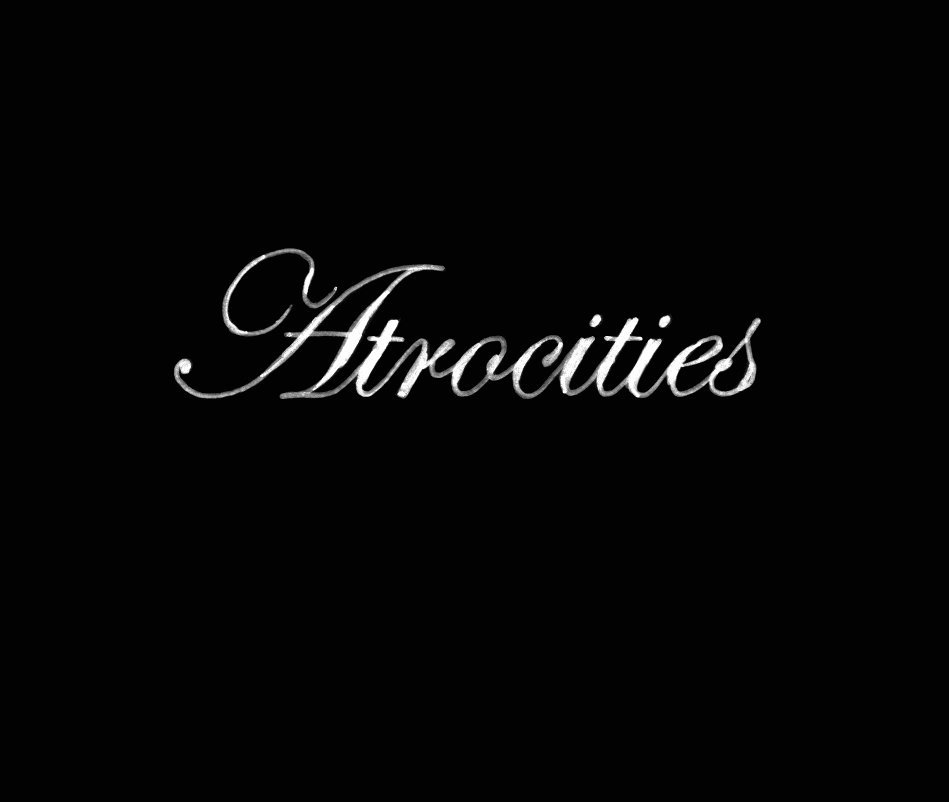About the Book
To witness is not the same as to look. To witness an event implies assumptions about the event itself — that perhaps it was a crime, perhaps it was wrong and perhaps in the name of justice, one must testify. ATROCITIES is based on the 85 etchings in Francisco Goya’s Disasters of War. Through documenting human cruelties during the Spanish Guerrilla War (1808-1813) with vivid images and pointed titles, Goya implies that witnessing is not the same as looking. There is a moral implication associated with the role of witnessing that can fuel the necessity to create.
Likewise for Joel Seah, ATROCITIES is also about witnessing and creating. Applying a queer lens to the Disasters of War as a cultural artifact, Seah has re-imagined and re-written the representation of suffering described by Goya — with a collection of horrors constantly articulated by his circle of gay friends.
In contextualizing Goya's masterpiece for today, ATROCITIES investigates how systems of visual representation and systems of language established by past histories can still accommodate imposed meanings or surface social ideologies for contemporary intervals and proposed futures.
Goya’s figures have been literally removed from their etched grounds, then hand-cut and colored. The figures are next staged and photographed in urban vignettes.
On a fundamental level, ATROCITIES conceptually follows arcs of visibility and invisibility in queer history.
As each figure shifts in scale and moves from plane to space, the various strategies of assimilation for queer identities in cultural landscapes are iterated.
However, regardless of sexual orientation, ATROCITIES hopes to engage the viewer with a persuasive critical dialogue that encourages reflection on any identity and its proximity to a content that has been (re)presented.
Likewise for Joel Seah, ATROCITIES is also about witnessing and creating. Applying a queer lens to the Disasters of War as a cultural artifact, Seah has re-imagined and re-written the representation of suffering described by Goya — with a collection of horrors constantly articulated by his circle of gay friends.
In contextualizing Goya's masterpiece for today, ATROCITIES investigates how systems of visual representation and systems of language established by past histories can still accommodate imposed meanings or surface social ideologies for contemporary intervals and proposed futures.
Goya’s figures have been literally removed from their etched grounds, then hand-cut and colored. The figures are next staged and photographed in urban vignettes.
On a fundamental level, ATROCITIES conceptually follows arcs of visibility and invisibility in queer history.
As each figure shifts in scale and moves from plane to space, the various strategies of assimilation for queer identities in cultural landscapes are iterated.
However, regardless of sexual orientation, ATROCITIES hopes to engage the viewer with a persuasive critical dialogue that encourages reflection on any identity and its proximity to a content that has been (re)presented.
See More
About the Creator
Joel Seah
Detroit | Michigan
Formally trained as a printmaker, Joel Seah received his Master of Fine Arts from Syracuse University and his Bachelor of Fine Arts from The University of Alabama at Birmingham. He is currently working as a pianist in Detroit, Michigan.


